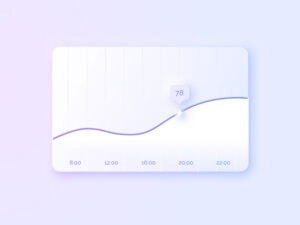If you are new to lead generation using pay-per-click (PPC) marketing, you have come to the right place. Here, we will discuss the fundamentals of using conversion tracking, pay per click (PPC), Google AdWords, and the marketing funnel.
Defining Commonly Used Terms & Tips on Applying PPC Strategies to Your Business
Pay Per Click (PPC)
Pay per click is a form of advertising where businesses only pay for their ads if an internet user deviates from the webpage he or she is on to click on an ad. PPC agencies are quickly popping up to show people how to capitalize on this useful advertising tool.
Pro tip: PPC management is the key to successful lead generation. Customers coming to you after clicking on your ad have a much higher probability of completing the sales funnel. However, the ad click is only the first step of the process.
While it’s important to give your customers a reason to stay, it is equally important not to give them a reason to leave. Slow loading landing pages, for example, are a surefire way to get a customer clicking the back button. Having a San Diego PPC agency on your team is a great way to guarantee you get a good ROI for your advertising dollars.
Lead Generation
Lead generation is capturing a consumer’s interest for the purpose of building a sales funnel.
Pro tip: You can become a trusted source of information by publishing web content that is useful and relevant to your customers. A great example of this is a mortgage broker posting engaging and informative blogs about how to qualify for a mortgage or improve credit ratings. The broker can promote these blogs on social media or share them through email campaigns as well. If you’re viewed as a reliable source of information, people will be primed and ready to come to you when they decide to make a purchase.
Conversions
Conversions represent the percentage of people who go from the top of the sales funnel (viewing something like a product or ad) to the bottom (taking action like buying a product or signing up for the email list).
Pro tip: The key to the success of your online business is having a high conversion rate. You want to make sure that you are getting people to your site and impressing them enough to buy or act in another desired way. So, after getting that click, your website needs an optimized UX/UI to guide customers in the right direction.
Google Ads (formerly Google AdWords)
Google Ads is a system of buying ad space in Google’s network of online advertising. Google displays highly targeted ads to people interested in a certain product or industry by combining keywords set by the advertiser with the searcher’s cookies.
Pro tip: Google Ads makes marketing easy. You set your budget and search for keywords relevant to your product or service, and Google automates the rest. You must still check on your key terms, bids, and conversions to make sure you’re getting the most out of this advertising process.
Sales Funnel
A sales funnel is the set of steps a consumer goes through before they purchase a product. For example, they see an ad, they click on it, browse your product and reviews, add a product to their cart, and then check out.
Pro tip: Each step in the process can be a challenge, and the number dwindles as the funnel progresses. That is where conversion tracking comes in. Understanding when and why people stop interacting with your business can help you determine a better strategy to keep prospects moving through the funnel. A San Diego internet marketing company will be able to analyze your strategy, your offerings, and your campaigns to keep your potential customers engaged and active.
Now you understand the basic terminology used when discussing pay-per-click marketing and how the processes work. For a more in-depth explanation of how PPC can boost your business, contact a San Diego PPC campaign management company or a digital marketing company.
Storm Brain helps numerous companies achieve their online goals, and we would be glad to explain how we can make PPC work for you.



